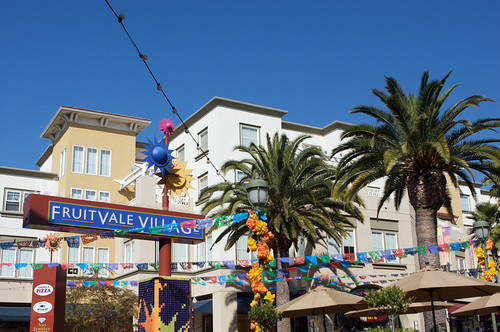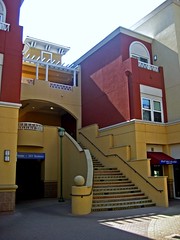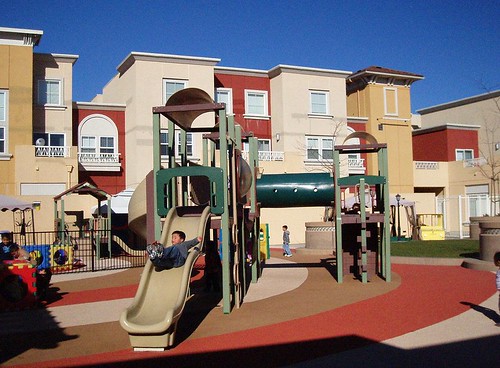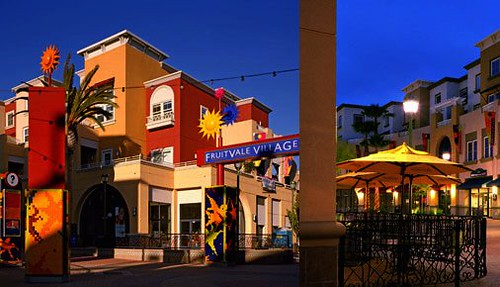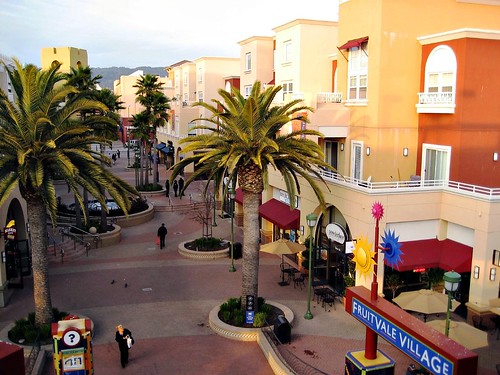The remarkable story of Oakland's Fruitvale Transit Village (conclusion)

Posted February 18, 2011 at 1:27PM
(Part 1 of this post may be found here.)
By the mid-1990s, the Unity Council and the Fruitvale community had made immense progress, obtaining a planning grant from the federal DOT along with encouragement to lead the design of an alternative vision, centered around community building and what we now call transit-oriented development. Without going into too much detail (which may be found here, here and especially here), the Unity Council, BART, and the City of Oakland formed a partnership; land was swapped; the Fruitvale Development Corporation was formed; there were many community planning sessions; and construction began in 1999. The project as we know it today was essentially completed in 2004.
The Transit Village was (and remains) designed to create and retain much-needed jobs for Fruitvale residents, leverage the revitalization work that has already occurred in Fruitvale (such as the public market and nearby housing) and provide a lively, pedestrian-oriented environment. Master planning and design was led by McLarland Vasquez Emsiek & Partners, with landscape architecture (a big part of the project's success) by PGA Design. Additional design support was provided by Square Peg, and construction was performed by Roberts-Obayashi Corporation.
Here's the writer J.S. in Builder on the project's design:
"It's hard to imagine that this vibrant infill community was a gritty, rundown parking lot in a former life. Today, the affordable neighborhood has traded its drab hues for a more lively palette—one that reflects the cultural influences of its Asian and Latino residents. Brightly colored planters and water fountains are adorned with tile work by local artisans, and the rhythmic architecture plays on California tradition . . .
"Retail is anchored at ground level, with community facilities on the second level and residential loft housing up top. Because the land parcel is an island in an urban sea, 'it was important for it to be welcoming and visible from all sides, without having the appearance of a ‘back side,' notes architect Ernesto Vasquez. The 360-degree visibility makes the enclave not just more beautiful, but more secure."
LISC also deserves tremendous credit as a key partner on the Transit Village project and in the neighborhood generally. Stephanie Forbes, director of Bay Area LISC and NRDC's host in Oakland for our tour of the Village and nearby neighborhoods, reports that her organization provided nearly $5 million in strategic acquisition financing and construction financing for the principal developments that constitute the project. In addition, LISC has been working with the Unity Council and the neighborhood for nearly 30 years, providing strategic program advice and training; bringing program ideas to nonprofit organizations in the neighborhood; and offering loans, equity, and grants. Of particular signifigance to this project, LISC brought a Main Street development concept (along with funding and technical assistance) to the Unity Council in 1996, establishing the foundation of a strong commercial corridor that has supported existing and new businesses and contributed to the community's economy without causing gentrification.
According to the Unity Council, here’s what’s in store for phase two of Fruitvale Transit Village:
“This plan will bring new residents and homeowners to the Village and foster 24-hour, 7-day vibrancy and sense of community that will further strengthen the commercial and retail components located at the Village retail plaza. The guiding principles for the Phase Two development will be to provide for mix-income homeownership residential units; to incorporate state of the art green building & energy savings systems; to build the maximum number of dwelling units; and that it be an award winning architectural product.”
You have to love that ambition, and their record suggests that they will achieve it. Our on-site tour guide was the Council’s chief operating officer, Jeff Pace, and I couldn’t be more grateful for his sharing his time with us.
Charles Lee’s presentation recites four lessons from Fruitvale that can be applied for success in other projects:
- Sustainable development must include social equity;
- Stable, community-based organizations are important to provide leadership and vision;
- Partnerships, particularly responsive government and business, are critical to success;
- One must have an ability to work through differences by negotiating win-win solutions that achieve mutual gains.
I would add one more to that list: Sustainable communities don't necessarily depend on government, where there is citizen will and/or enlightened private initiative. Everything happens in a policy context, so policy is important. But it is not the only answer to our environmental and social challenges. And, even better, progressive private-sector actions can influence policy for the better, just like lousy private-sector actions can in the other direction.
Stephanie Forbes summarizes the Fruitvale success:
"The work in Fruitvale created a place and revitalized a neighborhood that is now where you want to be. And where you can now get produce at the farmer's market, go to the clinic or library, drop your kid at preschool, buy a churro, taco, or beignet, and also stroll right up the main thoroughfare in the neighborhood and shop for clothes and music or more groceries. The placemaking was building the transit village and making the adjacent neighborhood business district more thriving.
"Our population, our cities, our neighborhoods are all different. Placemaking should be too. If we are going to grow smart, making a place like the more than 100 year old Fruitvale neighborhood more sustainable means creating a place with more housing, more businesses, more fresh produce and services that support the very diverse population of residents, visitors and commuters in ways that complement the existing neighborhood fabric."
I can't say it any better than that. Well done, everybody.
Move your cursor over the images for credit information.

